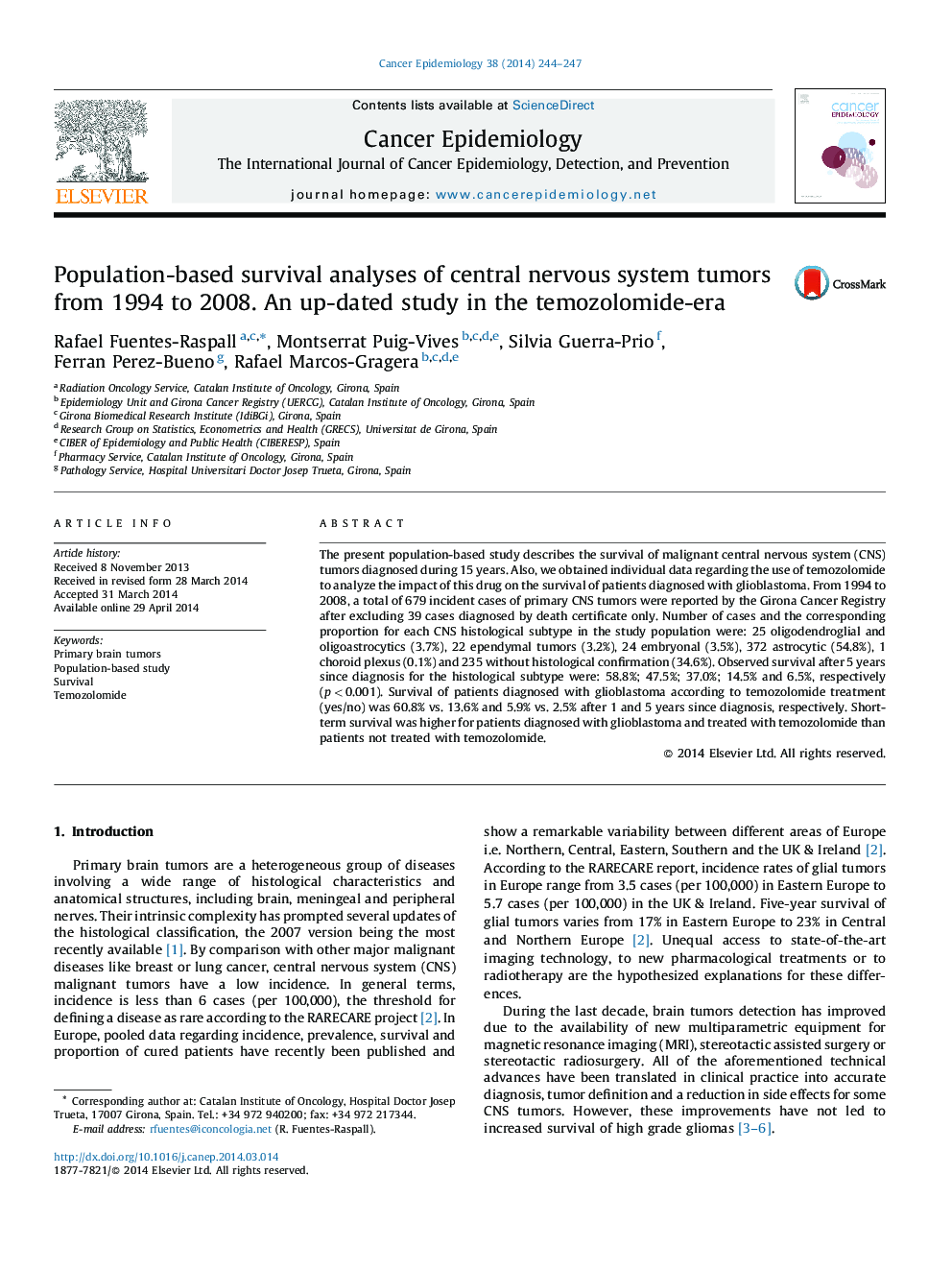| Article ID | Journal | Published Year | Pages | File Type |
|---|---|---|---|---|
| 2108982 | Cancer Epidemiology | 2014 | 4 Pages |
•The majority of the malignant central nervous system tumors diagnosed during 15 years in Girona were astrocytic (54.8%).•The highest survival corresponded to the oligodendroglial and oligoastrocytics tumors.•Survival of patients diagnosed with glioblastoma according to temozolomide treatment (yes/no) was 60.8% vs. 13.6% and 5.9% vs. 2.5% after 1 and 5 years since diagnosis, respectively.
The present population-based study describes the survival of malignant central nervous system (CNS) tumors diagnosed during 15 years. Also, we obtained individual data regarding the use of temozolomide to analyze the impact of this drug on the survival of patients diagnosed with glioblastoma. From 1994 to 2008, a total of 679 incident cases of primary CNS tumors were reported by the Girona Cancer Registry after excluding 39 cases diagnosed by death certificate only. Number of cases and the corresponding proportion for each CNS histological subtype in the study population were: 25 oligodendroglial and oligoastrocytics (3.7%), 22 ependymal tumors (3.2%), 24 embryonal (3.5%), 372 astrocytic (54.8%), 1 choroid plexus (0.1%) and 235 without histological confirmation (34.6%). Observed survival after 5 years since diagnosis for the histological subtype were: 58.8%; 47.5%; 37.0%; 14.5% and 6.5%, respectively (p < 0.001). Survival of patients diagnosed with glioblastoma according to temozolomide treatment (yes/no) was 60.8% vs. 13.6% and 5.9% vs. 2.5% after 1 and 5 years since diagnosis, respectively. Short-term survival was higher for patients diagnosed with glioblastoma and treated with temozolomide than patients not treated with temozolomide.
